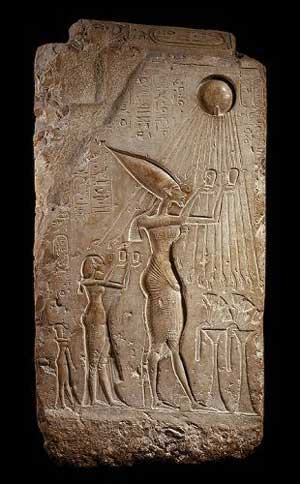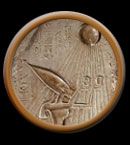
|
"Egyptian gods were traditionally represented as humans or animals or a combination of the two.
One of Akhenaten's most revolutionary acts was to represent his god, Aten, as an abstract
sun disk with outstretched rays, which often ended in tiny hands. In this typical scene,
Akhenaten, Nefertiti, and their daughter Meretaten worship Aten. "
Amarna, Great Palace Reign of Akhenaten, 1353 - 1336 B.C. Crystalline limestone; h. 102 cm,
w. 51 cm, d. 15 cm Egyptian Museum, Cairo
Museum of Fine Arts, Boston
Figure 1. Artworks such as this carved stone from Egypt depict the special status given to
the Sun. In this case, the pharoah Akhenaten and his family worship the Sun god, Aten. The
pharoah's name itself means "one who is effective for Aten" (AP, 2000).
|



